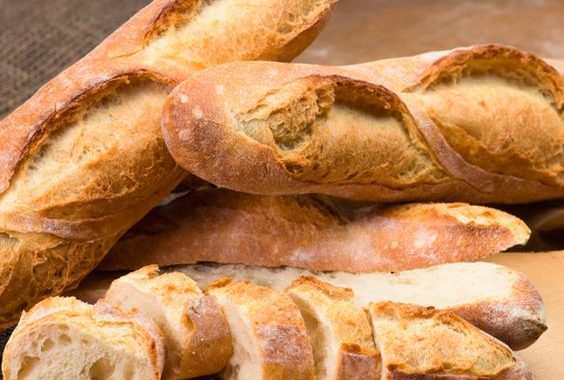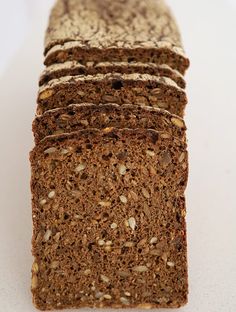Types of Bread & its importance across cultures
Breads hold significant cultural importance worldwide. It is more than just a food item; it symbolizes community , tradition , and ritual in many cultures. Its cultural significance may vary but its presence across societies representing more than just sustenance is a common thread.
There are numerous types of breads from around the world. Here are a few:
1.Baguette: A long , thin French bread with crispy crust. Its creation dates back to the 20th century. Its charm lies in its simplicity and versatility.
 2.sourdough: Made with sourdough starter, giving it a tangy taste and chewy texture. Before the baking the dough is kept to naturally ferment which gives the bread its distant taste and air pockets.
2.sourdough: Made with sourdough starter, giving it a tangy taste and chewy texture. Before the baking the dough is kept to naturally ferment which gives the bread its distant taste and air pockets.
 3.Ciabatta: An Italian bread with rustic crust and airy interior. Its made from a high-hydration dough, resulting in a moist , sticky consistency that requires careful handling during preparation. Its often used for sandwiches or simply enjoyed dipped in olive oil or as aside to soups and salads.
3.Ciabatta: An Italian bread with rustic crust and airy interior. Its made from a high-hydration dough, resulting in a moist , sticky consistency that requires careful handling during preparation. Its often used for sandwiches or simply enjoyed dipped in olive oil or as aside to soups and salads.
 4.Brioche: Rich and slightly sweet French bread made with eggs and butter. This breads origin traces back to medieval France. It can be shaped into various forms , from traditional loaves to rolls, buns, or even braids. Its incredibly versatile , enjoyed as both sweet and savory treat.
4.Brioche: Rich and slightly sweet French bread made with eggs and butter. This breads origin traces back to medieval France. It can be shaped into various forms , from traditional loaves to rolls, buns, or even braids. Its incredibly versatile , enjoyed as both sweet and savory treat.
 5. Grissini: Grissini , also known as breadsticks are thin , crisp sticks originated from Italy. Its simplicity, crunchiness and ability to complement a wide range of flavors makes grissini a beloved addition to Italian cuisine and beyond , appreciated for their versatility and satisfying crunch.
5. Grissini: Grissini , also known as breadsticks are thin , crisp sticks originated from Italy. Its simplicity, crunchiness and ability to complement a wide range of flavors makes grissini a beloved addition to Italian cuisine and beyond , appreciated for their versatility and satisfying crunch.
 6.Rye bread: Made partly or entirely with rye ,offering a distant taste. Rye bread has a denser texture and stronger slightly sour flavor as compared bread made solely with wheat flour. Its often enjoyed in sandwiches, served alongside hearty dishes , or used as a base for open-faced sanwiches.
6.Rye bread: Made partly or entirely with rye ,offering a distant taste. Rye bread has a denser texture and stronger slightly sour flavor as compared bread made solely with wheat flour. Its often enjoyed in sandwiches, served alongside hearty dishes , or used as a base for open-faced sanwiches.
 7.Focaccia: An Italian flatbread topped with herbs, olive oil and sometimes other ingredients. Its similar in style to pizza dough. Focaccia is extremely versatile and can be served as an appetizer, a side dish or even as main course.
7.Focaccia: An Italian flatbread topped with herbs, olive oil and sometimes other ingredients. Its similar in style to pizza dough. Focaccia is extremely versatile and can be served as an appetizer, a side dish or even as main course.
 8.Bagel: Bagels are beloved type of bread originated from the Jewish communities in Poland . They are distinctive for their ring shape , dense and chewy interior, and shiny , slightly crispy crust. They have become a staple breakfast item in many parts of the world , particularly North America.
8.Bagel: Bagels are beloved type of bread originated from the Jewish communities in Poland . They are distinctive for their ring shape , dense and chewy interior, and shiny , slightly crispy crust. They have become a staple breakfast item in many parts of the world , particularly North America.
 There are many more types of bread , each with its own unique taste , texture , and cultural significance.
There are many more types of bread , each with its own unique taste , texture , and cultural significance.
CULTURAL SIGNIFICANCE
Bread holds immense cultural significance across the world, often symbolizing sustenance, community, and tradition. Here are some cultural aspects:
1.Nourishment and Sustenance: Bread is a staple food in many cultures, providing essential nutrients and sustenance. It’s often a primary source of carbohydrates and serves as a dietary cornerstone.
2.Ceremonial and Religious Significance: In various religions, bread plays a significant role in rituals and ceremonies. For instance, in Christianity, bread is symbolic of the body of Christ in the Eucharist. Challah in Judaism is a ceremonial bread used during Sabbath and holidays.
3.Cultural Traditions: Different cultures have unique bread-making techniques and recipes passed down through generations. For example, baguettes in France, naan in India, tortillas in Mexico, and many others represent centuries-old culinary traditions.
4.Social and Communal Aspects: Bread often signifies sharing and communal gatherings. Breaking bread together is a symbol of unity and friendship, seen in many cultures during meals or celebrations.
5.Economic and Social Status: Historically, the type of bread consumed could indicate social status. Finer, more elaborate bread may have been reserved for the wealthy, while simpler bread made from cheaper ingredients was more common among the masses.
6.Art and Creativity: Bread-making is often considered an art form. From the intricate braiding of Challah to the precise fermentation process in sourdough, bakers often display creativity and skill in their craft.
7.Symbol of Home and Comfort: The smell of freshly baked bread is often associated with comfort and home. Many cultures have their own versions of comfort bread, which evoke feelings of nostalgia and warmth.
8.Adaptation and Fusion: With globalization, bread has adapted to different cultures and merged with local cuisines. For instance, the introduction of sandwiches in various forms in different cultures showcases this adaptation.
Bread’s significance goes beyond mere sustenance—it’s intertwined with cultural, social, and religious aspects, serving as a representation of heritage and tradition for many societies.







